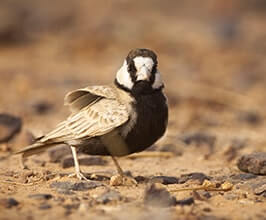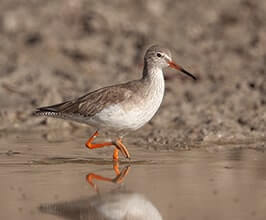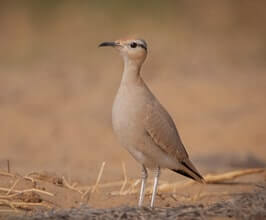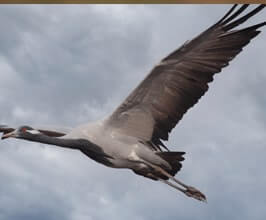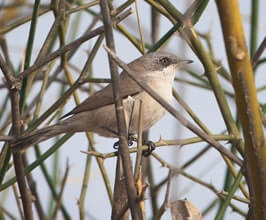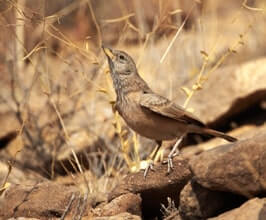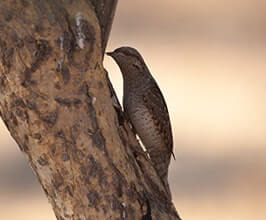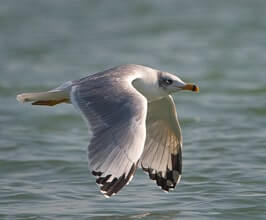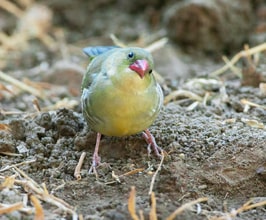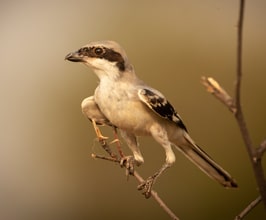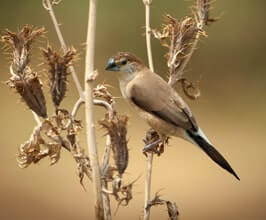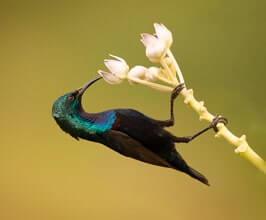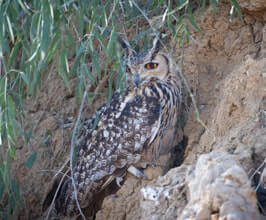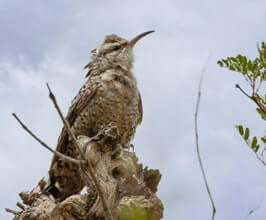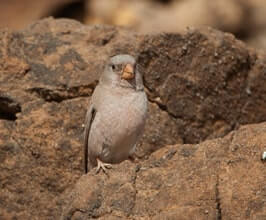Delhi – Sultanpur Bird Sanctuary - Ranthambore - Bharatpur - Chambal - Agra - Delhi- Corbett- Pangot- Sattal - Delhi
15 Days / 14 Nights
Are you a bird lover and planning a birding tour with your family or friends? Then you are on the ideal page! India is one of the most captivating birding sites in the world. Therefore, it is a veritable gold mine for any enthusiast who has caught the birdwatching bug.
Booked as per
request.
Included except arrival and departure city.

Private guide for complete tour.
Airport to Airport.
2-8PAX
Included
Our North India Fixed Departure Birding Tour will be perfect for spending your vacation in the diverse nature, Indian culture, and hundreds of bird sightings.
Curious to know more? Read on.Along with taking you on a tour of the North Indian birds, we will also take you on safaris to explore tigers and one of the seven wonders, the Taj Mahal.
And the best part is that these trips are merely bonuses that won't take away from the excitement or value of a birding adventure in India. The two states that are the focus of this birding tour are Rajasthan in India's Northwest and Uttarakhand in the heart of the Himalayas.
Firstly, we will cover Rajasthan, the epitome of rich culture and vibrant architecture. Rajasthan's three top birding and wildlife areas, Ranthambore National Park, National Chambal Sanctuary, and Keoladeo National Park, will be our first stop in Rajasthan.
One of India's most significant national parks, Ranthambore, is well-known for harbouring Bengal Tigers. More than 400 bird species can be found at Keoladeo, another considerable bird sanctuary. More than 250 species of migratory and permanent birds can be found in Chambal.Isn't it fascinating?
After our journey to Rajasthan, we'll take some time off and visit India's top tourist destinations, Agra, and visit the Taj Mahal and the Agra Fort. After this, Uttarakhand will be our next stop. Our key areas of interest for birding in Uttarakhand will be Jim Corbett National Park and the neighbouring Kumeria forests. The oldest national park in India, Corbett, is home to an eclectic mix of animals and birds. We will take you on wildlife safaris to look for tigers in the morning and afternoon, in addition to bird watching. If you're fortunate enough, you could witness one.The next destination on our birding tour of North India is Pangot, also known as the "Pheasant Capital of India," where we will search the birding trails for Cheer Pheasants, Koklass Pheasants, Hill Partridges, Kalij Pheasants, and many other birds before continuing to Sat Tal, a collection of seven interconnected lakes in the lower Himalayas, for our final birding stop. Guess what? This incredible birding journey is of just 15 days. One of the most excellent ways to learn about birds in India is through India Birding Tours.
You will have a great time while on this vacation. Hence, book one of our top India travel packages, the North India Fixed Departure Birding Travel, and enjoy a wonderful holiday with your family. Your birding trip will be worth it.
So let's get started with the itinerary of this famous North India Fixed Departure Birding Tour.
Over the first week, we cover these three birding destinations of Rajasthan. The birds we look out for include Indian Skimmer, Indian Courser, Lesser Whistling Duck, Greylag Goose, Bar-headed Goose, Ruddy Shelduck, Indian Pitta, Shikra, Painted Spurfowl, Painted Sand-grouse, White-rumped Flameback, Indian Golden Oriole, Great Tit, Crested Bunting, Common Tailor Bird, Paradise Flycatcher, Eurasian Wigeon, Mallard, Spot-billed Duck, Common Teal, Garganey, Indian Courser, Great Thick-knee, Red-crested Pochard, Ferruginous Pochard, Sarus Crane, Black Francolin, Painted Francolin, Grey Francolin, Common Quail, Rain Quail, Blue-breasted Quail, Jungle Bush Quail, Rock Bush Quail, Painted Spurfowl, Indian Peafowl, Common Shelduck, Comb Duck, Cotton Pygmy Goose, Gadwall, Imperial Eagle, White-tailed Eagle, Greater Spotted Eagle, Indian Spotted Eagle, Dusky Eagle-Owl, Pallas's Fish Eagle, Pallid Harrier, Darters, and several types of nightjars, pelicans, storks and terns.
During our birding in Uttaranchal, We focus in birding at Corbett National Park and the forests of Kumeria nearby and the Sattal. Corbett is the oldest national park of India and thrives with immense wildlife and avifauna. It is home to more than 500 species of birds and our targets here are Kalij Pheasant, Great Hornbill, Tawny Fish Owl, Ibisbill, Collared Falconet, Wallcreeper, Nepal Wren Babbler, Brown Dipper, Common Green Magpie, Black-chinned Babbler, Black-crested Bulbul, Crested Fisher, Common Iora, Great Hornbill, Himalayan Vulture, Cinereous Vulture, Peregrine Falcon, Bar-winged Flycatcher-shrike, Crested Tree Swift, Black-hooded Oriole, Yellow-bellied Fantail, Tawny Fish Owl, Brown Fish Owl, Velvet-fronted Nuthatch, Green-backed Tit, Himalayan Bulbul, Great Tit, Rufous Woodpecker, and Lesser Yellownape Woodpecker.
Lodging: For the most part of our North India Birding Trip, you get to stay at resorts or hotels that are close to or within the national parks and wildlife sanctuaries. At Pangot, we put you up at a lodge for two nights. All accommodations offer top-class service, comfortable bedding, meals, and basic amenities. These lodgings have been chosen exclusively to add to your birding adventure of India. We particularly select the hotels and resorts that are closest to birding locations.
Meals: Birdwatching can metaphorically be food and wine for many a birder, but the matters of the belly are, by no means, trivial for us. We ensure that you have the choice of both Indian and Western meals on the table, including your preference for vegetarian or meat-based food. Meal options may be a bit limited at the lodge in Pangot or at resorts that are far from urban centres, but the taste, quality and hygiene standards are never compromised.
Tour Difficulty: The Rajasthan leg of our North India birding holiday is quite easy. Having said that, a day of birding entails long walks in forests, grasslands, or along marshes. You should be able to put in the required legwork while carrying your birding equipment such as binoculars, camera, field guide and backpack. Birding in Uttarakhand, is comparatively difficult, owing to the mountainous landscape. But we take care to avoid steep climbs or long uphill slogs so that you reserve your energy for where it needs to be put: birdwatching.
Tour Extension: Though our tour includes the visit to the Taj Mahal to gladden the tourist in you, there is still plenty of recreational fun to be had alongside our birdwatching tour of North India. You may want to do sightseeing tours of the Rajasthani cities of Jaipur or a short spiritual jaunt of Varanasi and temples of Khajuraho. In Uttarakhand, you may want to check out the city of Nainital, a great draw among tourists. Whatever the tour extension you want, just let us know several days in advance and we will make the necessary arrangements.
Climate: Our North India Birding Tour is best done in the winter and spring seasons lasting from October to mid-May. The winters in Uttarakhand are quite cold, so you must carry winter clothes along. The spring is pleasant, but the mornings and evenings may be cold. The same goes for Rajasthan, though it is relatively warmer than Uttarakhand. The days of spring months in Rajasthan can be a bit hot, so summer wear will do on those occasions. You must also carry a raincoat for an odd shower.
Our North India birding adventure starts at our capital city Delhi. One of our representatives will receive you at the airport or railway station in Delhi and takes you to the pre-booked hotel. Most of the flights arrive at night in Delhi so the first day is kept for relaxation purposes. We arrange a meet and greet for our guests and that would be it.
Guests will have a full day to rest if they have arrived in Delhi early. Overnight will be at the hotel.
A metropolis like Delhi may not come across as a birding destination at first glance, but the Okhla Bird Sanctuary, located at Okhla barrage on the outskirts of the city, quickly puts paid to such notions. As many as 300 bird species have been spotted here and our targets for the day include two endemic species, Striated Babbler and White-tailed Stonechat, besides several other birds such as Eurasian Collared-Dove, Laughing Dove, Yellow-footed Green-Pigeon, Greater Coucal, Asian Koel, Grey-headed Swamphen, White-breasted Waterhen, Black-winged Stilt, Red-wattled Lapwing, Pheasant-tailed Jacana, Temminck's Stint, Wood Sandpiper, Whiskered Tern, Oriental Darter, Great Cormorant, Indian Cormorant, Grey Heron, Cattle Egret, Indian Pond-Heron, Black-headed Ibis, Black Kite, Spotted Owlet, Indian Grey Hornbill, Common Kingfisher, Green Bee-eater, Brown-headed Barbet, Rose-ringed Parakeet, Black Drongo, Long-tailed Shrike, Ashy Prinia, Plain Prinia, Sykes's Warbler, Clamorous Reed Warbler, Plain Martin, Red-whiskered Bulbul, Indian White-eye, Rosy Starling, Bank Myna, India Robin, Oriental Magpie-Robin, Bluethroat, Pied Bushchat, Citrine Wagtail, Paddyfield Pipit, and Red-headed Bunting.
We will visit Sultanpur bird Sanctuary, if you reach early morning, as hotels will not allow rooms before 12PM. If you reach Delhi in the evening or late than we will skip sultanpur visit.
At 6:00 in the morning, we will take an early mornign train to Ranthambore. Our driver will meet you at the Ranthambore train station and take you to your hotel. All the train station drop and pick up will be taken care by us, you dont have to worry about anything.
After lunch at resort in Ranthambore, we will go for birding with a local guide in the areas outside the park. This region is rich in birdlife, offering a chance to spot both resident and migratory species in their natural habitat.
Ranthambore National Park is one of India's largest wildlife sanctuaries, covering an area of 1334 square kilometres.
Although the Bengal Tiger is the main attraction, that is not it. Other wildlife, like the Indian Leopard, striped Hyena, Nilgai, Wild Boar, Sambar, Rhesus Macaque, Chital, and Mugger Crocodile, also draws thousands of travellers to the ecological hotspot. One of the most popular wildlife locations in North India is this park.
This entire evening is free time, and you can rest, chill with a cold bear. You will dine at the wildlife resort.
On the 3rd day, you'll go on two wildlife safaris, the first in the morning and the second in the afternoon. You will be able to observe a lot of bird species here. Compared to other tiger reserves in India, Ranthambore is often referred as one of the greatest, and you have the best chance of spotting a tiger here. After returning, you will spend the night at the resort, enjoy your meals, and relax.
Here comes day 4. Today you will experience two wildlife safaris, one in the morning and one in the late afternoon. Love watching birds? At Padam Talao, one of the park's many lakes, you can watch them. The grasslands, dense forests, and meadows are home to various species of birds.
Today, we'll go bird watching and search for species of birds, including the Black Francolin, Painted Francolin, Jungle Bush Quail, Grey Francolin, Common Quail, Blue-breasted Quail, Rock Bush Quail, Painted Spurfowl, Indian Peafowl, Red-crested Pochard, Common Shelduck, Lesser Whistling Duck and many more.
We'll leave Ranthambore hotel at 6am with our pack breakfast and reach to Sawai Madhopur Train station. We will take AC train, it will be 3hrs pleasant train ride without any hassle.
Keoladeo National Park is located in Bharatpur, which was formerly known as Bharatpur Bird Sanctuary.
One of the top birding locations in the world is Keoladeo. This park, recognized as a World Heritage Site, is home to more than 400 bird species, including many migratory birds, particularly waterfowl, Indian Courser, Sociable Lapwing, Imperial Eagle, and White-tailed Eagle. This park is an ideal wildlife habitat because of its terrain, which includes dry grasslands, swamps, scrubs, and wetlands.
As soon as you get to Bharatpur, you'll check into a hotel and visit Keoladeo National Park for bird viewing. You can watch hundreds of birds here and capture them with your camera at Keoladeo. At Keoladeo National Park, you can see at least 150 bird species in one day of birding.
We'll return in the evening, eat dinner there, and chill at night.A good day of birding at Keoladeo National Park can yield up to 150 bird species, if not more. The prized sightings include Indian Courser, Sociable Lapwing, Imperial Eagle, White-tailed Eagle, Greater Spotted Eagle, Indian Spotted Eagle, Dusky Eagle-Owl, Darters, Large-tailed Nightjar, Indian Nightjar, Grey Nightjar, Sarus Crane, Black-necked Stork, Painted Stork, Asian Openbill Storks, Common Pelican, Dalmatian Pelican, Black Bittern, Greater Painted Snipe, Marshall's Iora, Brook's Leaf Warbler and Siberian Rubythroat.
Many birding paths at Keoladeo, a 29 square kilometre region, are worth exploring. After breakfast, we'll leave for another birding excursion in Keoladeo National Park, but this time we'll travel to different terrain to look for more recent bird specialities.
Shikra, Indian Spotted Eagle, Greater Spotted Eagle, Tawny Eagle, Steppe Eagle, Imperial Eagle, Bonelli's Eagle, Booted Eagle, Egyptian Vulture, White-rumped Vulture, Indian Vulture, Red-headed Vulture, Eurasian Marsh Harrier, Common Kestrel, and Peregrine Falcon are among the birds of prey we'll be looking for today. A birding excursion in Keoladeo's wetlands exposes species like the Bar-headed Goose and the Ruddy Shelduck.
Our trips to Keoladeo for bird watching will take up the whole day. You might see hundreds of different bird species on this bright day. After that, we'll head back to the resort for a tasty dinner and rest for the night.
We will check out from hotel after breakfast and travel 90 kilometres in a 2-hour car ride from Bharatpur to Dholpur. We'll concentrate on the Chambal River. We will have 3hrs boat ride and we will look for the star attraction of Chambal river - Indian Skimmer and Gharials
You can find more than 250 permanent and migratory North Indian species in this sanctuary. The Chambal River rises in the Madhya Pradesh Vindhya Mountains and runs northwest into Rajasthan before turning southeast and into Uttar Pradesh. Although the river travels very little across Rajasthan, its passage through Dholpur attracts a wide variety of bird species, and this is the region we are focusing on in Chambal National Park.
The Indian Skimmer is just one of the stunning birds you can see here; there are countless others that you can photograph or just observe. Indian Courser, Black-bellied Terns, Great Thick-knee, Red-crested Pochard, Ferruginous Pochard, Bar-headed Goose, Pallas's Fish Eagle, Pallid Harrier, Greater and Lesser Flamingos, Darters, Gull-billed Tern, River Tern, Little Tern, Black-bellied Tern, Whiskered Tern, White-winged Tern, and numerous other species are on the checklist.
We will also see Marsh Crocodiles and Gangetic Dolphins in Chambal river.
We'll drive to Agra for approx 90mins after birdwatching in Chambal. We will have lunch on the way from Chambal(Dhaulpur) in city restaurant or in midway and our dinner will be at hotel
Note : We may go visit Taj Mahal from the bank of Yamuna river during the sunset or maybe we will visit Agra fort in the evening. We will discuss with the whole group and plan accordingly
We will wake up early today around 5am, guide and driver will come to pick the group at the hotel and will go for Taj Mahal visit at Sunrise.
One of the many delights of this trip—a visit to the Taj Mahal—occurs halfway through our North India birdwatching vacation.
The Taj Mahal, formally recognized as one of the world's seven wonders, draws millions of travellers each year. It is rightfully referred to as the monument of love and was constructed in the 17th century by the Mughal Emperor Shah Jahan in honour of his beloved wife, Mumtaz Mahal.
The Taj Mahal is the pinnacle of the Mughal Empire's magnificent art and architecture. The monument's grand design and the delicate stone construction and carving work on the tiles, panels, apses, domes, windows, and vaults are of the highest calibre and inventiveness ever seen.
We will back to hotel by 8am or 8:30am, will have our breakfast and check out from the hotel and drive for Delhi.
We will visit Old Delhi in the evening and will have dinner at City Restaurant, Overnight will be at hotel in Delhi
We will start our trip to Uttarakhand early in the morning through the route from Delhi. Our journey in the car takes around 4-5hours, and our final destination is Corbett National Park. We halt for a quick tea and snack break in the middle of the trip at a wayside eatery and get to Corbett in the afternoon. After eating lunch at the hotel we had already reserved, we were set for a Jeep Safari to Corbett National Park.
The primary goal of this outing is to spot several North Indian birds that frequent the riverbank and forests.
Our species of interest include Crested Kingfisher, Pied Kingfisher, Common Kingfisher, White-throated Kingfisher, Pallas's Fish Eagle, Lesser Fish Eagle, Grey Wagtail, White-Browed Wagtail, White Wagtail, Spotted Forktail, River Lapwing, Red-wattled Lapwing, Brown-headed Barbet, Lineated Barbet, Slaty-blue Flycatcher, Greater Goldenback (Flameback), Plain Martin and Wallkeeper, among many others.
After this half-day Jim Corbett birding expedition, we return to the resort for dinner and overnight.
We all know that Jim Corbett National Park is one of India's most well-known national parks. Thousands of tourists, birdwatchers, and wildlife enthusiasts travel to Corbett every year to observe its exceptional biodiversity.
Corbett, which lies in the foothills of the Himalayas, offers a diverse landscape that includes grasslands, riverine belts, lush deciduous forests, and a sizable lake. During the two wildlife safaris in Corbett National Park—one in the morning and one in the afternoon—the Bengal Tiger, its main draw, is on our must-see list. We also search for the Corbett bird specialities on both occasions.
Can you believe that more than 500 different kinds of birds have been observed in Corbett? So our goal for today will include Kalij Pheasant, Great Hornbill, Tawny Fish Owl, Ibisbill, Common Iora, Great Hornbill, Himalayan Vulture, Cinereous Vulture, Peregrine Falcon, Bar-winged Flycatcher-shrike, Crested Tree Swift, Black-hooded Oriole, Collared Falconet, Wallcreeper, and Nepal Wren Babbler.
Additionally, if we're fortunate, we'll spot the tiger. Furthermore, Corbett National Park offers an abundance of animals for visitors to witness. After having a fantastic day, you will return to your resort in the evening for dinner and chill.It's day 11 already!
We have a fantastic opportunity to witness several Himalayan bird species at risk of extinction while birding at Corbett National Park. The best area to look for these unique winged beauties is the forest near Kumeria, around 20 kilometres from Tiger Camp. Following a tasty breakfast at the resort, we will drive there.
An enjoyable birding session at Kumeria usually yields Ibisbill, Brown Dipper, Common Green Magpie, Nepal Wren Babbler, Pallas's Fish Eagle, Black-chinned Babbler, Black-crested Bulbul, Crested Fisher, Yellow-bellied Fantail, Tawny Fish Owl, Brown Fish Owl, Great Tit, Rufous Woodpecker, Lesser Yellownape Woodpecker, and many more.
We will be back to resort for lunch, afer lunch we will visit again Corbett National Park. We will try to go on a Tiger Safari in the Bijrani zone, where Corbett's tiger count is at its highest.These tiger trails in Corbett National Park frequently produce sightings of magnificent creatures. Elephants and deer are only a few animals seen nearby and photographed.
We end our busy day of Corbett birding tour at the resort.
We enjoy breakfast, pack up, and depart for the Pangot in the Uttarakhand in the Nainital district. It's a three-hour drive through breathtaking alpine scenery. After checking in at a birding lodge and eating lunch, we depart for a tour of Pangot to look for birds.
Pangot, situated in the lower Himalayas at an elevation of 1980 meters, has become a well-liked vacation spot for visitors looking to escape from Nainital's crowds and bustle. It has climbed the list of India's birding hotspots throughout time and draws countless numbers of eager birdwatchers each year.
When bird-watching at Pangot, we focus mainly on the lower woodland regions. We anticipate Scaly-bellied Woodpecker, Grey-crowned Prinia, Long-billed Thrush, Golden Bush Robin, Blue-throated Barbet, Brown-fronted Woodpecker, Scaly-bellied Woodpecker, Black-lored Tit, Black-throated Tit, Black-chinned Babbler, and Yellow-breasted Greenfinch, in addition, many more.
We head back to the bird watching resort in the evening for dinner and a restful night.
For a good cause, Pangot is known as the Himalayas' "capital of the pheasant." In the winter, many pheasants can be spotted in this area. We set out for higher elevation birding today. Cheer Point is a location with some excellent birding routes surrounding it.
So let's get started.
We discover these birding routes in Pangot for sightings of Cheer Pheasant, Koklass Pheasant, Hill Partridge, Kalij Pheasant, Asian Barred Owlet, Grey Treepie, Blue Whistling Thrush, Yellow-bellied Green Finch, Upland Pipit, Blue-throated Barbet, Altai Accentor, Chestnut-bellied Rock Thrush, Himalayan Woodpecker, Himalayan Buzzard, Bear.
In addition to offering spectacular views of the Nanda Devi mountains in the Himalayas, the high-altitude excursion is a great place to capture those breathtaking landscape sceneries.
You will return to the guest house in the evening for dinner and the night after an entire day of birdwatching at the high height of Pangot.
After a hearty meal, we leave for Pangot and travel about 55 kilometres to Sat Tal. It takes around 2 hours to travel across the rugged terrain, and when you arrive about noon, you'll be in awe of Sat Tal's magnificence.
The Nainital district has seven interconnected lakes collectively known as Sat Tal. It is a popular winter resting place for many migrating birds.
After you settle into a hotel in Sat Tal, we leave on a birding tour. Our targets for the Sat Tal birding tour include the Long-tailed Broadbill, Grey-sided Bush Warbler, Hill Partridge, Rufous-throated Partridge, Brown-flanked Bush Warbler, Whistler's Warbler, Mountain Scops-Owl, Brown Fish Owl, Ashy Woodswallow, Bar-winged Flycatcher-shrike, White-throated Fantail, Lesser Racket-tailed Drongo, Black-naped Monarch and many more.
After daylong birding at Sat Tal, we return to our resort in the evening for dinner and overnight.
Here we come to the end of our tour. After completing an Short Birding session of Sat Tal in the morning, we load up and go to Delhi (Depends on Flight Departure Time from Delhi). During the seven-hour drive, you will experience magnificent hills on both sides before you reach Delhi. We will drop you off at the airport in Delhi when you arrive for your next flight.
